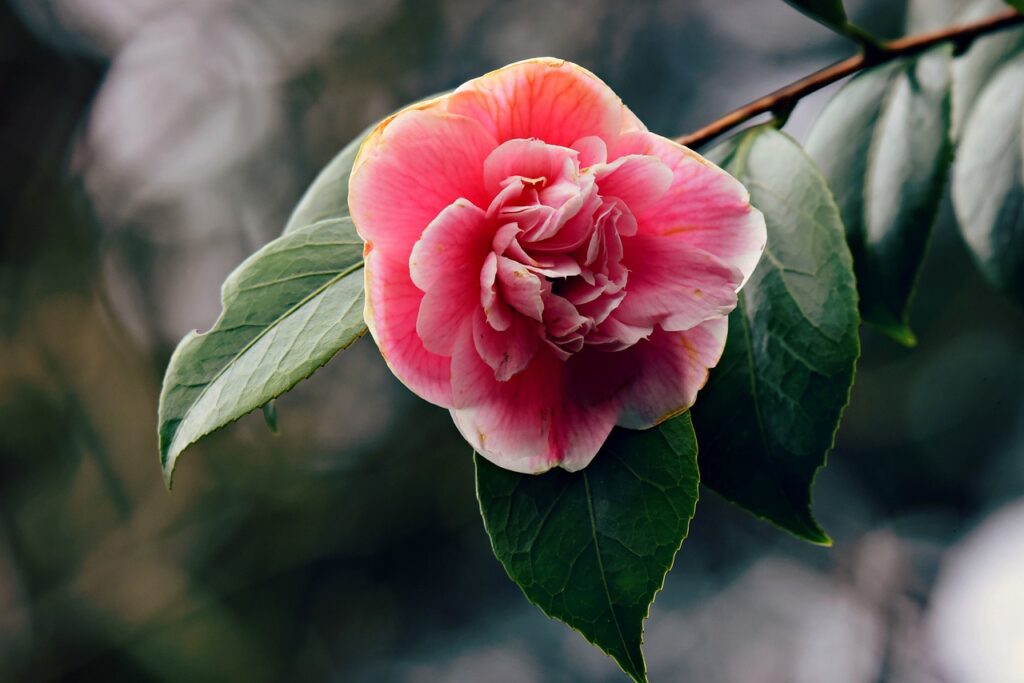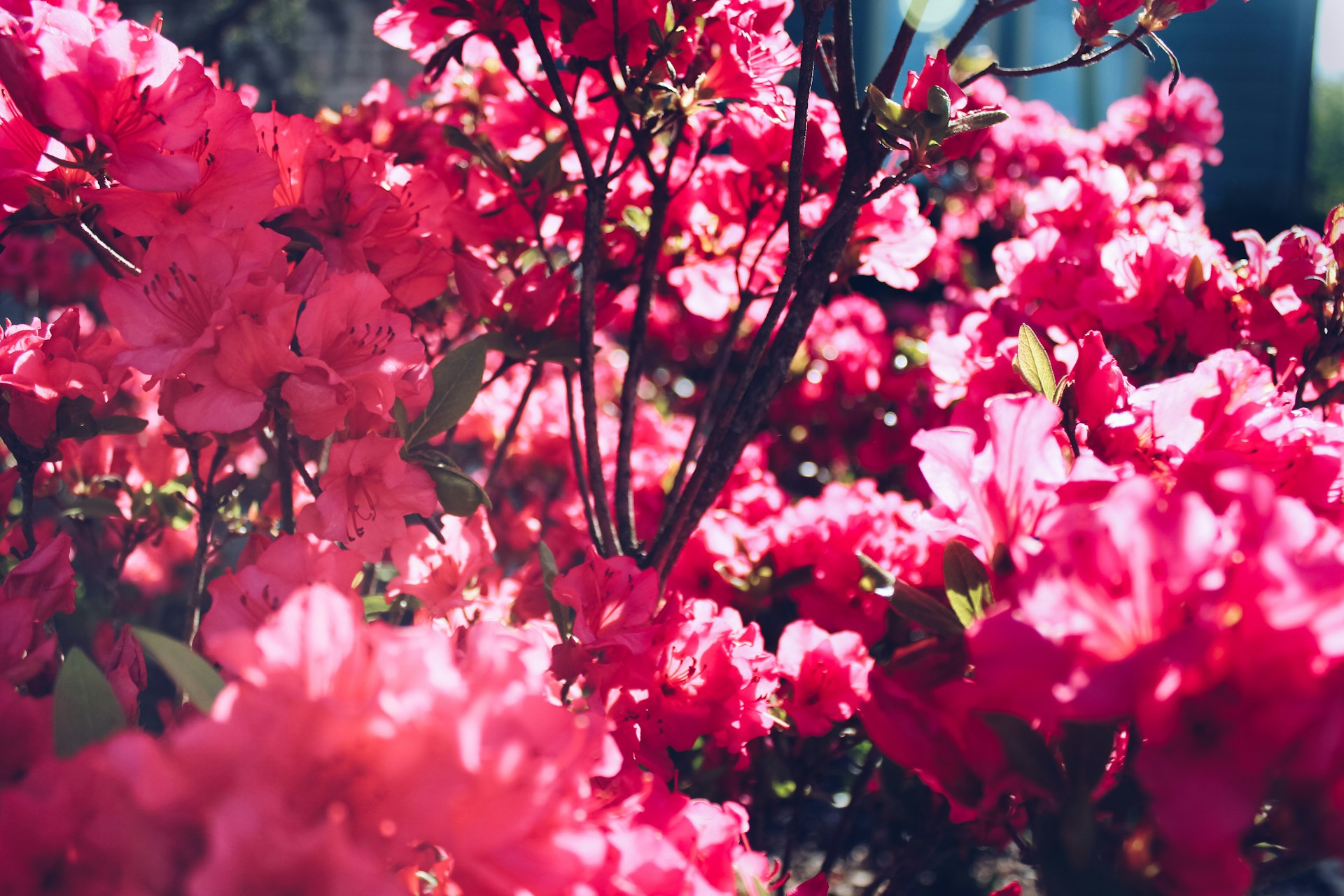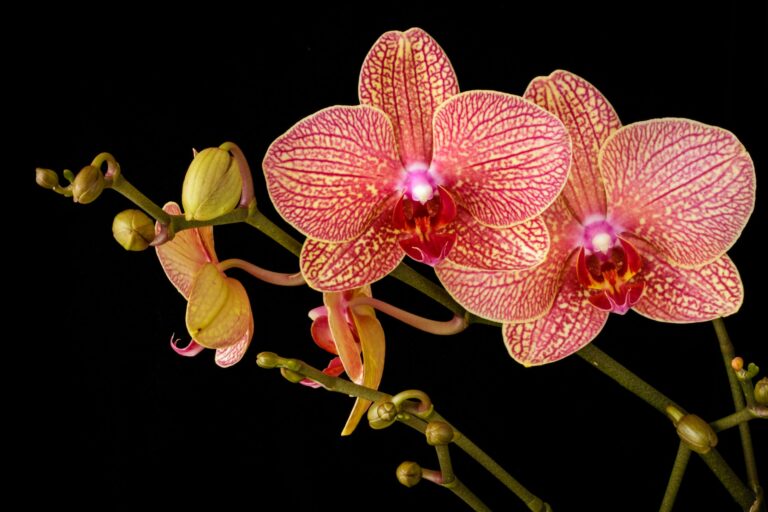If you’re a fan of azaleas, you know how stunning they can be when they’re in full bloom. But how much sun does an azalea need to grow beautiful leaves? Understanding the light requirements of your azaleas is essential to ensure they thrive in your garden.
Azaleas are known for their delicate flowers and bright foliage, but they’re also picky about the amount of sun they receive. Azaleas prefer partial shade, meaning they need about four to six hours of sunlight daily. Also, some varieties grow well in the morning sun and afternoon shade.
In this article, we’ll explore the ideal sunlight requirement for your azaleas and provide some tips to ensure they get the right amount of light.

What are Azaleas?
Azaleas are a popular flowering shrub that belongs to the Rhododendron family. They are known for their vibrant, showy flowers that bloom in various colors, including pink, red, white, and purple. Azaleas are native to Asia, Europe, and North America and thrive in temperate climates.
Types of Azaleas
There are two main types of azaleas:
- Deciduous
- Evergreen.
Deciduous azaleas lose their leaves in the fall, while evergreen azaleas keep their leaves year-round. Evergreen azaleas are more common and have a longer blooming period than deciduous azaleas.
Azaleas can also be classified based on their flower form, which can be single, double, hose-in-hose, or ruffled. Single flowers have one layer of petals, while double flowers have multiple layers of petals. Hose-in-hose flowers have a second layer of petals that are smaller and sit inside the larger petals, while ruffled flowers have wavy or frilled edges.
In addition to these classifications, there are many different cultivars of azaleas, each with unique characteristics and growing requirements. So, ensure you understand the different types of azaleas and their characteristics to help you choose the best light requirements for your plants to thrive.
What type of light is best for Azaleas?
For azaleas to thrive and grow into a healthy plant, you must provide them with the best lighting conditions. There are three light conditions that are best suited for this plant. They include indirect or filtered light, morning sun, or bright shade.
Azaleas prefer bright, indirect light. They thrive in locations that receive filtered sunlight or partial shade. This means the light should be diffused or partially blocked by a canopy of trees, lattice, or sheer curtains. In this area, they should receive about four to six hours of sunlight daily.
Also, it benefits from the morning sun. Morning sunlight helps stimulate growth and flower production. Provide them with about five hours of morning sun and part shade in the afternoon when it’s hot.
Azaleas grow well in bright shade conditions. This refers to areas that receive ambient light without direct exposure to the sun. Shade provided by taller trees or structures that filter the sunlight is ideal. The shade should be consistent throughout the day to prevent stress or leaf burn.
While azaleas prefer shade, they also require sufficient light for photosynthesis. Avoid placing them in areas of deep shade, such as areas entirely shaded by large buildings or dense evergreen trees. Insufficient light can result in reduced blooming and weak growth.

Factors to consider when providing light requirements for azaleas.
Plant variety.
Different azalea varieties may have slightly different light requirements. Some varieties can tolerate more sunlight, while others are more shade-tolerant. It’s helpful to research your specific variety or plan to plant to understand its light preferences.
Climate.
The local climate plays a significant role in determining the light conditions for azaleas. In warmer regions, where sunlight can be intense, providing more shade and protection from the afternoon sun is crucial. In cooler regions, azaleas may benefit from more direct sunlight. Understanding your climate will help you adjust the light conditions accordingly.
Sun exposure.
Assess the amount of sun exposure your garden receives throughout the day. Observe the patterns of sunlight and shade in different areas of your garden. Consider nearby buildings, trees, or structures that may cast shadows and affect the available light.
Orientation.
Consider the orientation of your garden space. North-facing or east-facing areas often receive more gentle morning sunlight, making them suitable for azaleas. South-facing or west-facing areas tend to have more intense and prolonged afternoon sun, which may require additional shading or protection for azaleas.
Seasonal Changes.
Consider how the light conditions change throughout the seasons. Trees that provide shade during the summer may lose their leaves in the fall, allowing more sunlight to reach the ground. Consider the seasonal variations in light and make adjustments as needed, such as providing temporary shade during the hottest part of the year.
How To Water Your Fiddle Leaf Fig Plant
Can Azalea live in full sun?
Azaleas are not well-suited for full sun conditions, especially in hotter regions. However, some azalea varieties can tolerate more sunlight than others. Here are some types of Azaleas that are recommended for sunny environments.
- Deciduous Azalea varieties
- Piedmont Azaleas
- Southern Indica varieties (sometimes called Sun Azaleas), such as Formosas
- Encore Azaleas
- Perfecto Mundo series
- Aromi hybrids
- Flame Creeper Azaleas
While these varieties can grow in sunny conditions, they have some limitations. For instance, when in the sun, the flowers don’t last long because of the scorch from the sun; however, the plant will produce more flowers in the sun than in a shady spot.
If you have no choice but to plant azaleas in a full-sun location, there are steps you can take to mitigate the potential issues:
- Amend the Soil: To improve its moisture retention capacity, prepare the soil by incorporating organic matter such as compost. Well-draining soil that retains moisture will help mitigate the effects of full sun exposure.
- Mulch: Apply a layer of organic mulch around the base of the plants to help conserve soil moisture, regulate soil temperature, and reduce weed growth. This will help create a more favorable environment for the azaleas.
- Watering: Regular and consistent watering ensures the soil stays moist but not waterlogged. Water deeply and avoid letting the soil dry out completely. Early morning or evening watering helps minimize water loss due to evaporation.
- Shade or Protection: Consider providing shade or protection during the hottest day. This can be achieved through temporary shade cloth, strategically placed umbrellas, or by planting taller shrubs or trees nearby to provide shade.
Can an Azalea live in full shade?
When you look at how much sun does an azalea need, most people forget about the plant in full shade. But, the plant can’t thrive in full shade. It requires atleast a couple of hours of sunlight daily to thrive.
What to expect when azalea is in a shaded area.
- Reduced Flowering: Azaleas planted in full shade may have reduced or limited flower production. Adequate light is necessary for the plants to form buds and produce blooms. The lack of light in the full shade can result in fewer flowers or no blooms.
- Leggy Growth: Azaleas in full shade may exhibit elongated, weak growth as they stretch toward any available light. The plants may become spindly and less compact than those receiving more light. This leggy growth can detract from the overall aesthetic appeal of the plants.
- Fungal Issues: Lack of sufficient light and air circulation in the full shade can create a damp and humid environment, increasing the risk of fungal diseases. Azaleas planted in such conditions may be more prone to issues like leaf spot, powdery mildew, or root rot.
- Weaker Plants: Azaleas in full shade may have weakened overall vigor and resilience. Due to the lack of light and compromised growth, they may be more susceptible to pests, diseases, and environmental stressors.
While azaleas prefer some shade, it’s best to provide them with a balance of light and shade to ensure their health and optimal performance. Partial shade or filtered sunlight is generally ideal for most azalea varieties. This means providing them with a few hours of direct or dappled sunlight each day, preferably in the morning or late afternoon, while protecting them from the intense midday sun.
So, how much sun does an azalea need?
Azaleas typically require a balance between light and shade to thrive. They prefer partial shade or filtered sunlight, meaning they should receive a few hours of direct or dappled sunlight daily. Morning sun exposure particularly benefits azaleas as it stimulates growth and flower production.
However, they should be protected from the intense heat and direct rays of the afternoon sun, which can damage the leaves and hinder their overall health. While specific light requirements may vary slightly depending on the variety and local climate, providing partial shade with some morning sun is generally ideal for azaleas to flourish.
10 Succulent Plants That Grow Tall

